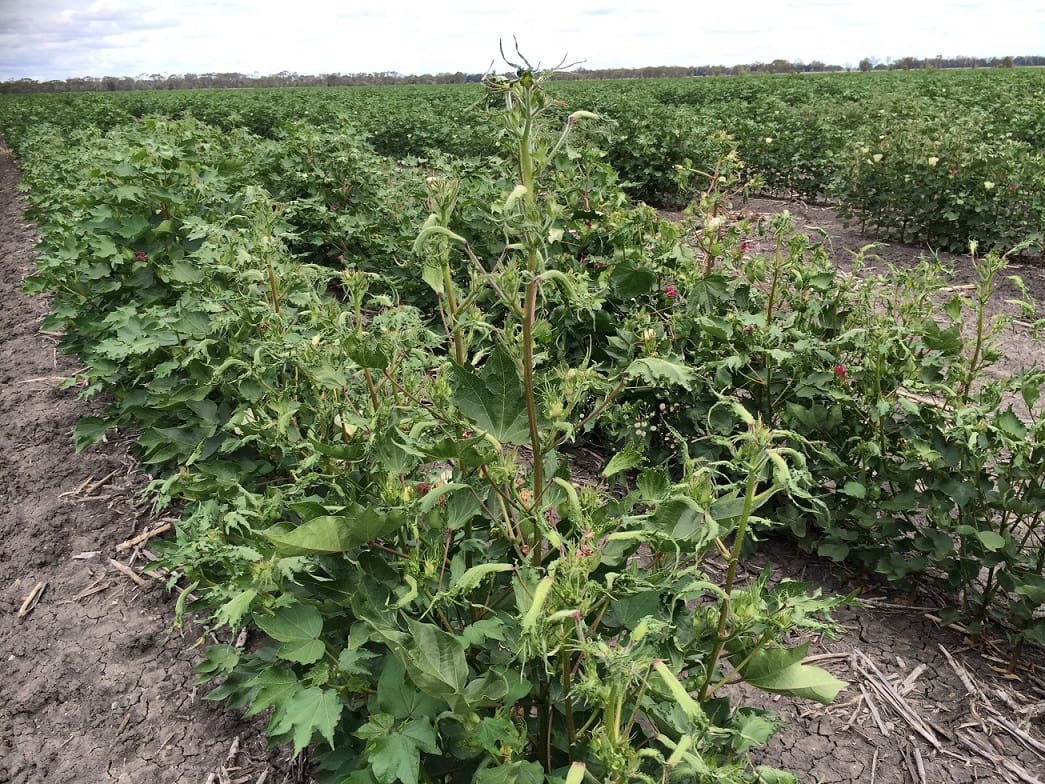
Minimising the risk of spray drift damaging crops is a high priority for the grain and cotton industries.
GRAIN and cotton research organisations have joined forces to call for expressions of interest for the implementation of a hazardous weather warning system to help reduce the risk of spray drift incidents.
The system will utilise remote sensing technology to provide real-time weather data to grain and cotton growers.
The Grains Research and Development Corporation (GRDC) and the Cotton Research and Development Corporation (CRDC) wish to partner with interested third parties to develop and deploy a Spray Drift Hazard Alert and Warning System for use in New South Wales and Queensland with potential to expand to other states and industries.
GRDC manager chemical regulation Gordon Cumming said the aim of the investment was to create a system to improve on-farm decision making, by accurately identifying and predicting hazardous spray conditions.

Gordon Cumming
“Reducing the risk of spray drift is imperative for social, environmental and financial reasons for Australian agriculture and the wider community,” Mr Cumming said.
“GRDC and CRDC are committed to investing in research to improve on-farm practices, the sustainability of agriculture and more specifically the enduring profitability of Australian growers.”
Strict spraying guidelines
Mr Cumming said current regulations provided strict guidelines for the application of agricultural chemicals and did not permit spraying when hazardous surface temperature inversions were present.
In an inversion, chemical droplets can remain suspended in the inversion layer in concentrated form and be carried significant distances.
“Inversions are present most nights for different lengths of time, which can severely limit spray opportunities. This is a particular concern during summer when spraying during daylight is often compromised due to high temperatures or plants experiencing moisture stress,” Mr Cumming said.
“Until recently there has been no reliable and accurate method to determine when inversion conditions are hazardous for agricultural spraying.”
Collaborative effort
This collaborative, new investment will build on research by the GRDC, CRDC and the West Australian Department of Primary Industries and Regional Development (DPIRD) that investigated the effect of near-surface temperature on spray operations and produced methodology and algorithms which allow accurate predictions of hazardous inversion conditions.
CRDC executive director Ian Taylor said the expression of interest (EOI) represented the next step in the process of improving spray drift hazard detection by creating an effective warning system for growers.
“Spray drift is a significant issue for agriculture and this investment represents a vital cross industry collaboration to improve information and outcomes at a farm level,” Dr Taylor said.
Weather network
The EOI seeks proposals for the building of a tower network, and the development of software with remote sensing capability to provide information back to grain and cotton growers and spray contractors about weather conditions.
“This work involves establishing, operating and maintaining a network of Profiling Automatic Weather Stations (PAWS), initially across the grain and cotton regions of Queensland and New South Wales, with the potential to expand nationally,” Mr Cumming said.
“Once developed and deployed this spray drift hazard alert and warning system will consist of PAWS which collect and process local weather data and provide accurate real time information as well as short-term forecasting about surface inversions to growers or spray contractors.
“Preferably this information would be presented alongside other relevant weather information that affects decision making by spray operators.”
The GRDC and CRDC are equal investment partners in this project to develop the technology for this spray drift hazard alert and warning system.
“This work will be a significant venture into an innovative new space that will see the development of a continuous network of PAWS across the cropping areas of eastern Australia,” Dr Taylor said.
“As the spray drift hazard alert and warning system is established it is envisaged that the network data would be available to industry to warn growers, spray contractors and other stakeholders of hazardous spray conditions.”
Sources: GRDC, CRDC
For more information about the EOI on spray drift hazard alert and warning system go to https://grdc.com.au/research/applying-and-reporting/current-procurement/expression-of-interest-and-other/spray-drift-hazard-alert-and-warning-system
Grain Central: Get our free daily cropping news straight to your inbox – Click here

HAVE YOUR SAY